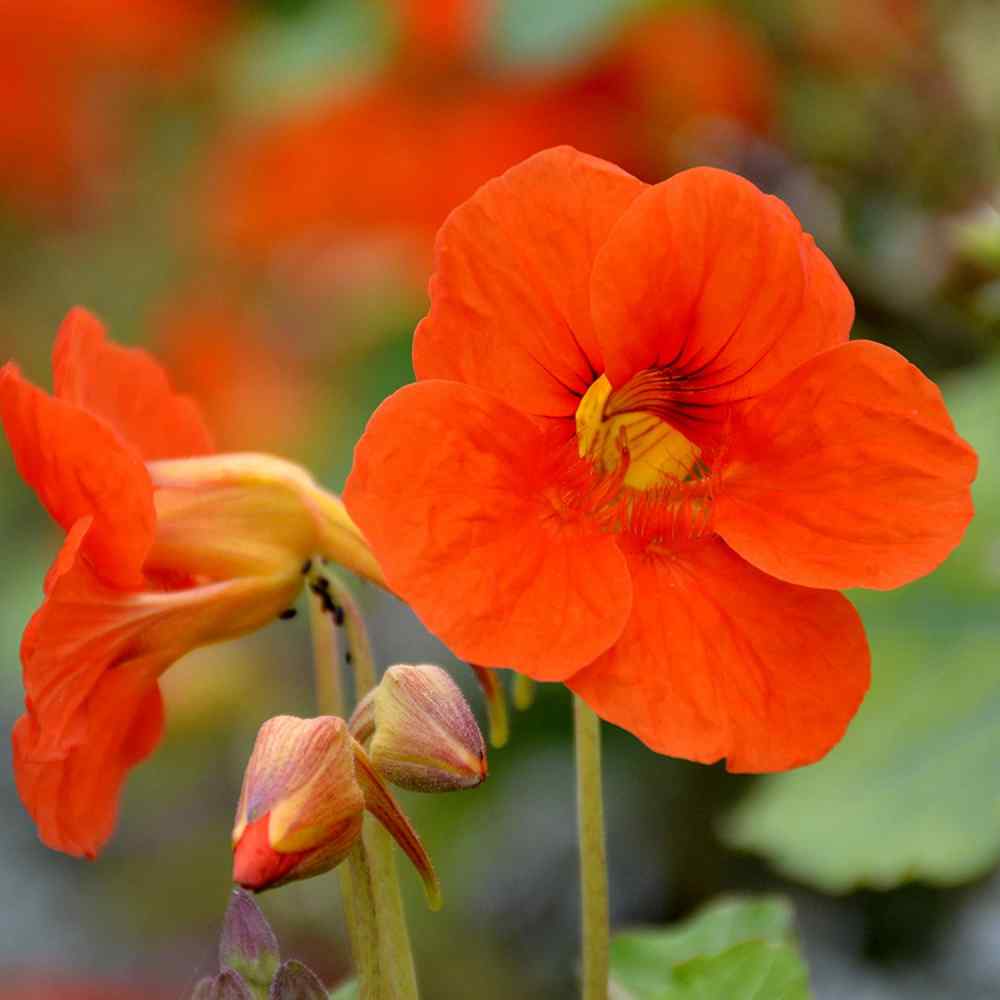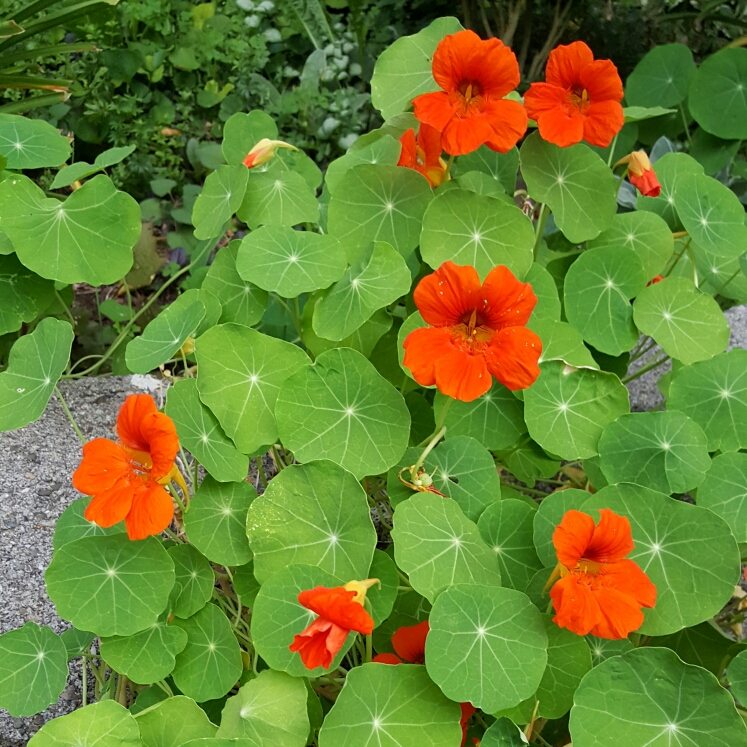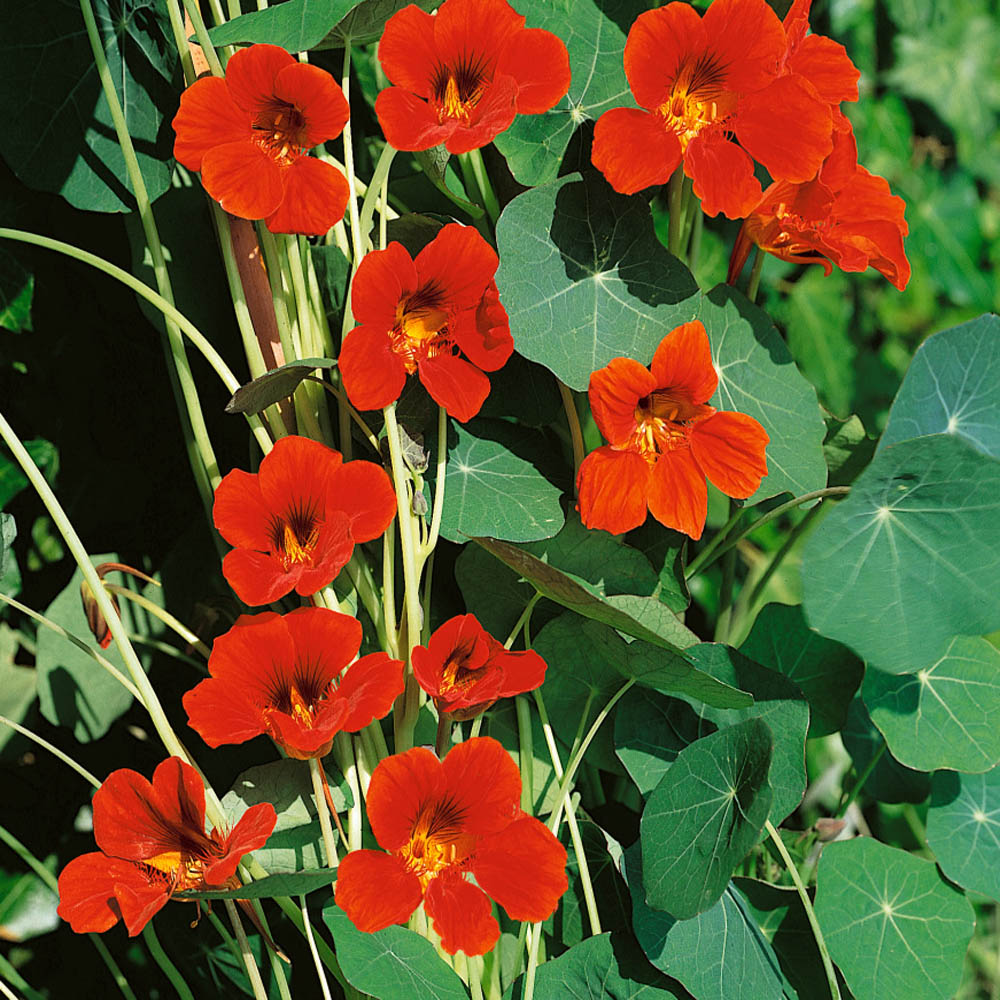Nasturtium Spitfire
If you're looking for a beautiful and versatile flower to add to your garden, look no further than nasturtium spitfire. This climbing flower boasts stunning red and yellow blooms and can be easily grown from seed. But there's more to nasturtium spitfire than just its looks. Keep reading to learn about its benefits and how to best care for this gorgeous plant.
Pain Points of Nasturtium Spitfire
One common issue that gardeners face when growing nasturtium spitfire is that the plant can become too leggy and not produce as many blooms as desired. Additionally, the plant can attract aphids and other pests. But don't let these potential pain points discourage you from growing this beautiful flower.
What is Nasturtium Spitfire?
Nasturtium spitfire is a climbing flower that belongs to the Tropaeolum genus. It is known for its vivid red and yellow flowers that bloom in the summer and fall. The plant is easy to grow from seed and can be trained to climb fences, trellises, and other structures. Nasturtium spitfire also has several benefits, such as attracting beneficial insects and adding color and texture to dishes when its leaves and flowers are used in cooking.
Main Points about Nasturtium Spitfire
To summarize, nasturtium spitfire is a beautiful and versatile climbing flower that can be easily grown from seed. While it may have some potential pain points, such as legginess and pest attraction, these issues can be managed with proper care. Nasturtium spitfire can add a pop of color and attract beneficial insects to your garden, as well as be used in cooking. Overall, it is a lovely addition to any garden.
Nasturtium Spitfire Care Tips
When growing nasturtium spitfire, it's important to provide it with well-draining soil and full sun. The plant can tolerate some shade, but will not produce as many blooms. Regular watering is also important, but be careful not to overwater as the plant can be prone to rot. To encourage the plant to produce more blooms and less foliage, pinch back the stems as needed. And if aphids or other pests become a problem, try using natural remedies like spraying the plant with a mixture of water and dish soap.

I remember planting nasturtium spitfire in my garden for the first time and being amazed at how quickly they grew and bloomed. I trained them to climb up the trellis in my backyard and was rewarded with an explosion of color all summer long. I also love using the leaves and flowers in salads and other dishes for a pop of color and flavor.
The Benefits of Nasturtium Spitfire
In addition to adding beauty to your garden and flavor to your meals, nasturtium spitfire has several other benefits. The plant attracts beneficial insects like bees and butterflies, which can help pollinate other plants in your garden. Nasturtium spitfire also has antibacterial properties and has been used medicinally to treat a variety of ailments.

Nasturtium Spitfire and Companion Planting
Nasturtium spitfire is a great companion plant for vegetables like tomatoes and cucumbers, as it can help repel pests and attract beneficial insects. The plant also does well planted near herbs like rosemary and sage.

Question and Answer
Q: Can nasturtium spitfire be grown in containers?
A: Yes, nasturtium spitfire can be grown in containers, but make sure the container has adequate drainage and the plant receives enough sunlight.
Q: How often should I fertilize my nasturtium spitfire?
A: Nasturtium spitfire does not require heavy fertilization, but can benefit from a light application of fertilizer in the spring and summer.
Q: When is the best time to plant nasturtium spitfire?
A: Nasturtium spitfire can be planted in the spring after the last frost or in the fall in milder climates.
Q: Can I eat the leaves and flowers of nasturtium spitfire?
A: Yes! The leaves and flowers of nasturtium spitfire are edible and add a peppery flavor to salads and other dishes.
Conclusion
If you're looking for a beautiful and versatile climbing flower to add to your garden, give nasturtium spitfire a try. With its stunning red and yellow blooms, easy-to-grow nature, and multiple benefits, it's the perfect addition to any garden. And with proper care and attention, you can enjoy this lovely flower for seasons to come.
Gallery
Nasturtium 'Spitfire' - Tropaeolum Majus Seeds - Select Seeds

Photo Credit by: bing.com / nasturtium tropaeolum majus spitfire
Tropaeolum Lobbianum 'Spitfire', Climbing Nasturtium 'Spitfire' In

Photo Credit by: bing.com / spitfire tropaeolum nasturtium gardentags
Nasturtium Seeds - Climbing Spitfire Flower Seed

Photo Credit by: bing.com / nasturtium spitfire climbing seeds
Nasturtium Seeds - Climbing Spitfire Flower Seed

Photo Credit by: bing.com / nasturtium spitfire seeds
Renee’s Garden ‘Spitfire’ Nasturtium Update! | Gardens, Winter Plants

Photo Credit by: bing.com / nasturtium spitfire nasturtiums edible personalgardencoach jardines jardín backyard